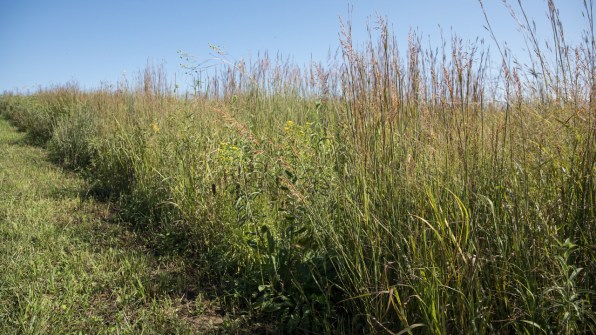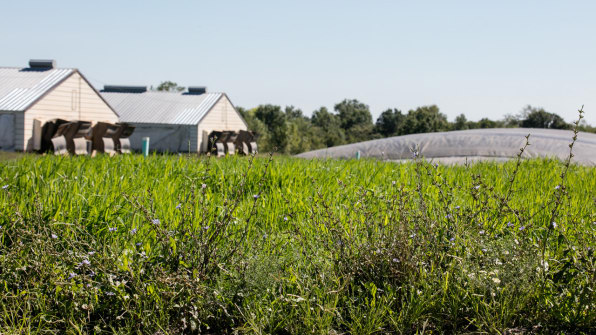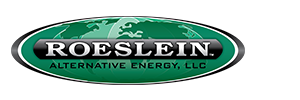Published by Fast Company
Written by Ellie Anzilotti
Over the past couple of decades, monarch butterflies, one of the most recognizable (and important) visitors to gardens across North America, have been declining in number–as much as 95% of the population has disappeared since the 1980s. The reasons are numerous: Mexico, where the pollinators migrate to escape harsh winters, has eliminated many of the trees where monarchs flock, and severe and unpredictable weather due to climate change has disrupted populations. And in the Midwest, where monarchs are most populous, farming practices that lean heavily on herbicides and pesticides are killing off native milkweed plants, where monarchs lay their eggs.
The Environmental Defense Fund is trying to tap into those same farms to bring monarchs back. Through a new initiative, called the Monarch Butterfly Habitat Exchange, the EDF is working with private landowners like farmers and agriculture companies to encourage them to develop milkweed-rich monarch habitats on their properties. Right now, EDF is focusing on habitat restoration projects in central Texas, northern Missouri, and the Central Valley of California–three key sites along monarchs’ migratory path. Eventually, the Exchange will expand to more regions. To build out the habitat projects, it’s sourcing investments from companies aiming to scale up their environmental impact.

One of those companies is Smithfield, the largest pork producer in America, which became the first food company to get involved with the Exchange. Smithfield owns 500 farms, and contracts with another 2,000 independent farmers across the U.S. With a contribution of $300,000 to the Exchange, Smithfield will finance the planting of milkweed and wildflower species around the edges of one of its farms in northern Missouri. In all, this investment will restore around 1,000 acres, says David Wolfe, director of conservation strategies at EDF. That’s just a fraction of the 30 million acres he’d like to see restored through the Exchange program, but he’s hopeful that both the environmental and economic feasibility of the project could prove it’s possible to scale this kind of effort up.

The environmental benefits are clear: The native species, in addition to providing a habitat for pollinators like monarchs, also aids in soil regeneration. Monoculture farming, which has taken over the Midwest, has degraded soil quality and contributes to devastating flooding.

The project also represents an opportunity for Smithfield to try to reform its image. Its hog farms, where waste collects in open-air lagoons and is then used as fertilizer on fields, are known contributors to water pollution and air quality issues, and are also prone to flooding and overflow. The company has pledged to work to clean up its practices by covering lagoons and implementing onsite anaerobic digesters that can convert waste to energy through its Smithfield Renewablesprogram, introduced last year. While it’s an incremental improvement over its existing practices, environmental advocates like the Southern Environmental Law Center have expressed concern that these proposals don’t go far enough to actually clean up the hog industry–because they don’t actually eradicate the use of lagoons.
In light of this, the investment in monarch habitats could also come across as an attempt to paper over the company’s more troubling environmental track record. But this type of wildlife restoration effort can stand on its own, and it’s relatively low-cost and simple for farmers to implement. (This effort doesn’t have to be limited to farmers, however: Companies like Dell are also growing monarch “way stations” in gardens around their corporate offices.)

There’s also potential for monarch habitat restoration to create an additional revenue source, in the form of renewable energy, for farmers who choose to do it. Through a partnership with Roeslein Alternative Energy, a Missouri-based company, Smithfield is developing a method of converting harvested prairie flora into natural gas for energy. Roeslein has been working with Smithfield since 2014, working on converting hog waste into natural gas, and the new investment from Smithfield in the monarch habitat restoration project will help the company scale up the conversion of prairie biomass to energy.
“It’s the concept of multiple benefits,” Wolfe says. “We’re be hoping to show it as a model to other farmers not just in Missouri, but across the Midwest, to achieve landscape-scale conservation goals.” As researchers this year have counted that monarch butterflies are reaching their highest population levels in the past 25 years, more habitat restoration projects can help support their comeback.

